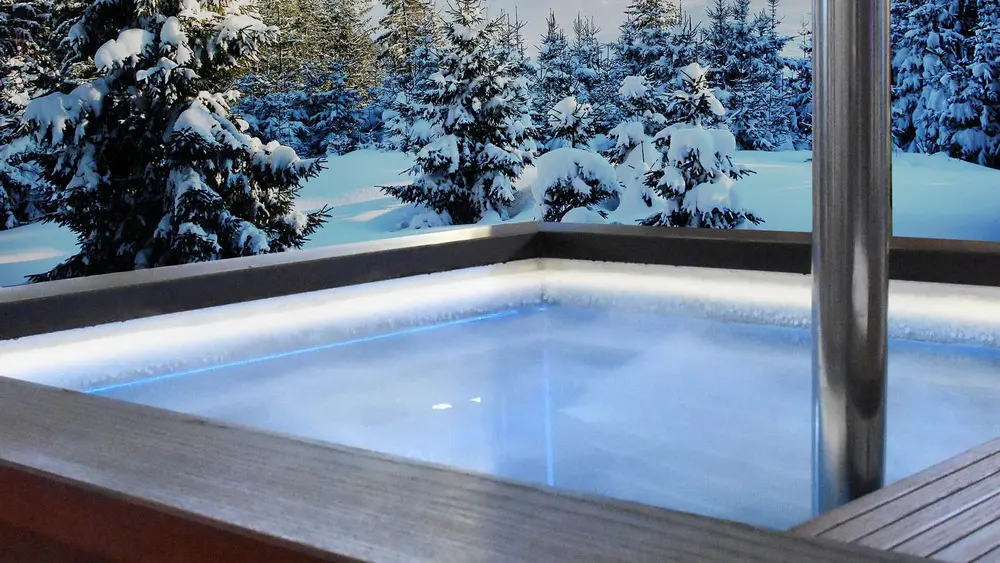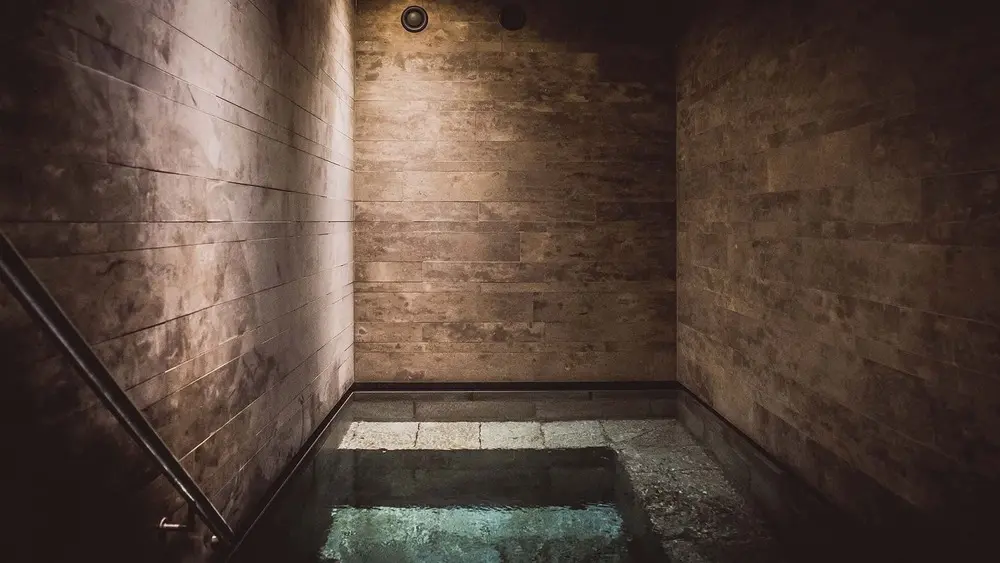Those looking for a great cardiovascular jumpstart can benefit greatly from the cold plunge pools available in wellness centres, sport clubs and spas. Thanks to the action of cold stimulation to the body, users feel refreshed and re-energised. There are also a number of other ways in which a cold bath or dip can help health and wellbeing.
So, what is a cold plunge pool and should you have one as part of your wellness offering? Read on to find out more about cold plunges and their benefits.
Dive deeper with the eBook
What Is a Cold Plunge?
Getting into cold water and immersing the body completely for a period of time is what we understand by a cold plunge. This is usually done in a plunge pool – a specifically designed small tub of water that is set to a low temperature.
Ideally, the cold plunge pool temperature is kept at around 7 to 12 ºC . This is enough to stimulate the body without becoming a danger to health for regular users. The end goal is to experience a contrast with a different treatment, usually a sauna or steam bath.
This is why cold plunge pools often form part of spas, sports clubs or fitness centres. Users can benefit from the range of hydrotherapy options and associated treatments, such as massages, sensory relaxation, etc.
Designing and Installing a Cold Plunge Pool
There are no set rules on what dimensions a cold plunge pool needs to have. The key element to ensure is that the water is cold enough to create the desired effect. Additionally, it’s useful for the pool to be relatively deep to help people fully immerse themselves. Ideally, this is around 1 metre of depth.
Cold plunge pools don’t need to be large, because it’s unlikely that several users want to be in it at the same time. They are not designed for swimming in. This offers the advantage of versatility – a plunge pool can fit in small spaces and be maintained relatively easily. There are also numerous shape options; while most plunge pools are rectangular, this can vary depending on the space and surroundings you wish to install it in.
From an aesthetic point of view, the versatility of cold plunge pools can be a great advantage. Minimalist and sleek, they can be installed in-ground or above-ground. Single-piece structures made from stainless steel fit perfectly with modern decor, especially as sharp-edged squares.
However you can also install a rounded, wood-edged plunge pool into more rustic environments. Finally, you might opt for a concrete plunge pool that also blends in well with most spaces.


Benefits of a Cold Plunge
Cold plunge therapy dates back to various ancient traditions, as do steam baths and saunas. In the late 5th century BC, Roman baths took an example from the Greeks and installed frigidariums (cold rooms) as part of their wellness circuits, to have users go through a cold pool after the steam room and the hot water pools.
Nowadays, cold plunges form part of contrast therapy. The idea is to stimulate the cardiovascular system through a series of contrasting experiences, from hot and steamy to cold and revitalising. Moreover, cold therapy has become popular in sports centres as a recovery solution after intense workouts .
Here are just some of the benefits associated with cold and/or contrast therapy:
- A general “wake up”, revitalising effect on the body and mind
- Potentially improved muscle recovery and reduced soreness
- Long-term use can boost the user resistance to the cold
- Oxygenation and nutrient transportation to the skin, thanks to increased blood circulation
- Improved blood flow, supporting a stronger immune system, contracting and dilating vein walls
- Better blood flow supports a reduction in swelling and inflammation – extremely important for those suffering from chronic pain or arthritis
- Endorphin release for a better mood
- Promoting cell regeneration
- Potentially increased metabolic rate for the immediate period after use (as the body works harder to maintain its core temperature
Adding cold plunge pools to the wellness experience
In cold plunge pools, users submerge themselves completely, usually after a hot session (in a sauna or steam bath) or after an intense, hot workout. Some facilities also provide a hot plunge for contrast, at approx. 38 ºC, allowing users to alternate between the two water temperatures.
Another option is to start with cold therapy and work to increase the time one can spend in the cold water. After holding out to their limit, users can then switch to heat – e.g. the sauna or a hot water pool. Alternatively, for a more gentle, warm contrast, some gyms also offer lukewarm baths and rooms.
It’s important to note that the body gradually gets used to any stimulus. After some exposure to cold therapy, users’ limits will gradually increase, allowing them to spend longer and longer in the cold pools. It’s important not to spend too long in the cold plunge pool at the beginning, instead approaching this practice incrementally and with care.
Here’s a step-by-step guide for using the cold plunge pool:
- Start with a warm shower upon entering the spa or wellness area
- Enjoy a relaxing steam bath or sauna for 10-15 minutes (or however long is comfortable)
- Switch to the cold plunge pool. Once in, focus on controlling your breathing and enjoying the tingling experience
- When this becomes too intense or uncomfortable, get out and relax in a lukewarm room or bath.
We would recommend limiting time in the cold plunge pool to 2 minutes initially.
Conclusion
Cold plunge therapy is a popular and effective way to promote overall health and wellbeing. Including a plunge pool in your gym or wellness area is also easy to do and aesthetically pleasing. It will complete your wellness offering and enhance the attractiveness of your facility, without a significant added investment or long-term maintenance commitment.
